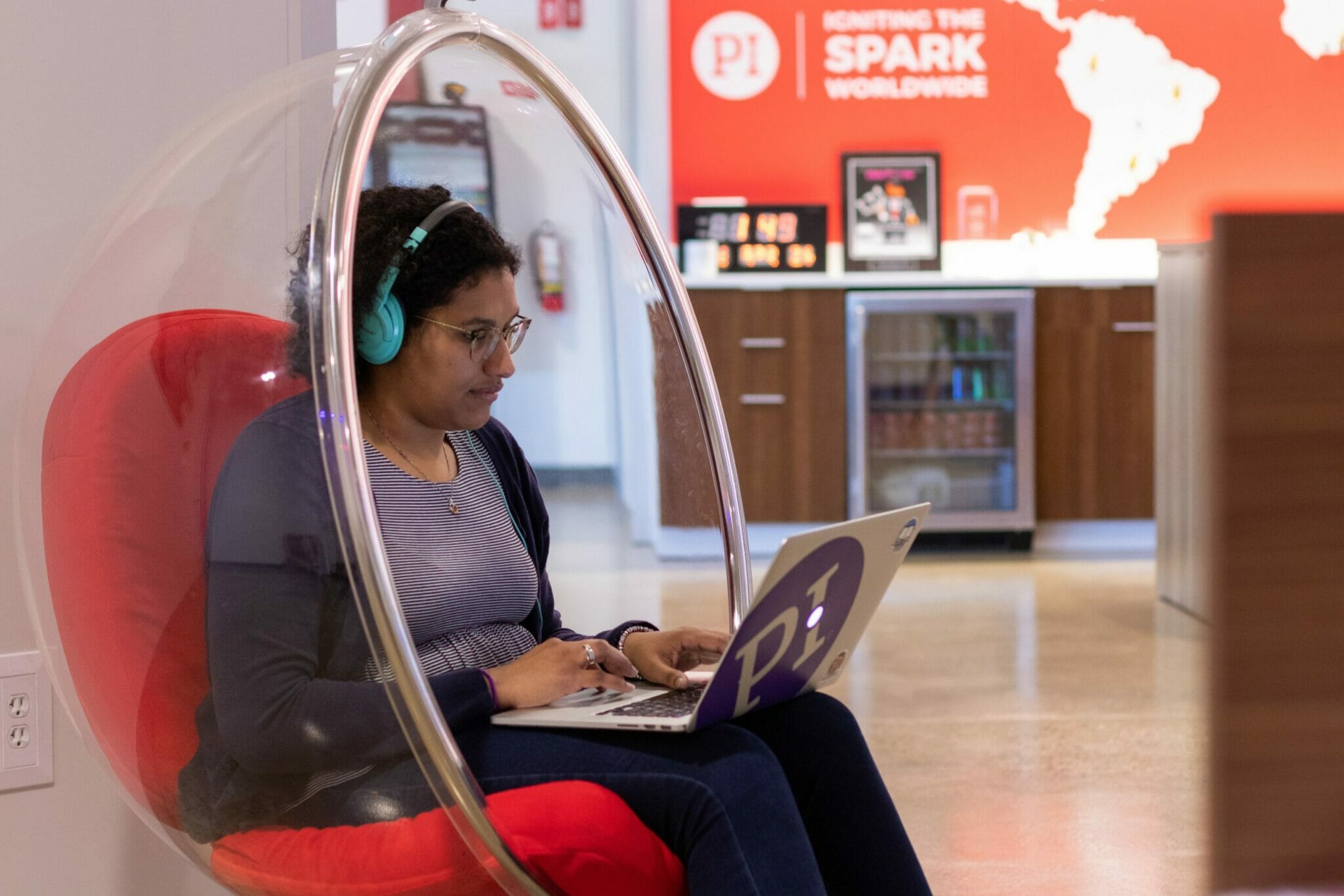My name is Roberta and I’m an Artisan. More on that in a bit, but first, let me set the stage by telling you a little bit about myself.
I am the learning experience designer on the user experience team here at The Predictive Index (PI). Our team handles developing and testing product concepts that could potentially go within our software platform. My primary focus is ensuring our users have delightful learning experiences within our software. That means I’m usually creating wireframes, storyboards, and low fidelity prototypes of product features and user flows.
My team looks to me to be the learning expert. They expect me to have deep knowledge of learning theories so that I can make the software as easy and intuitive as possible for our users. This involves collaborating with stakeholders within our product team and customer success team, and connecting with users directly to understand their issues. I then try to figure out a learning design solution that meets the overall needs of the business.
If you see me around the office, I’m usually in meetings collaborating with others or I’m hiding away trying to get some quiet time to hammer out those minute details. My team counts on me to think about the small details and intricacies of the user experience that others might miss.

My behavioral pattern
The PI Behavioral Assessment essentially reveals where you fall on the spectrum of four workplace behavioral drives:
1. Dominance: Dominance is the drive to exert one’s influence on people or events.
2. Extraversion: Extraversion is the drive for social interaction with other people.
3. Patience: Patience is the drive for consistency and stability.
4. Formality: Formality is the drive to conform to rules and structure.
Here’s my pattern:
 To the uninitiated, that behavioral pattern may not mean a whole lot, which is where Reference Profiles come in. All behavioral patterns map most closely to one of our 17 Reference Profiles, which gives us a way to paint the picture of someone’s behavioral drives in broad strokes. You can think of these as easy-to-reference groupings of the characteristics of people who have similar drives.
To the uninitiated, that behavioral pattern may not mean a whole lot, which is where Reference Profiles come in. All behavioral patterns map most closely to one of our 17 Reference Profiles, which gives us a way to paint the picture of someone’s behavioral drives in broad strokes. You can think of these as easy-to-reference groupings of the characteristics of people who have similar drives.
My Reference Profile is an Artisan.
By definition, Artisans are known to be accommodating and analytical, while producing highly precise and accurate work.
I found out my Reference Profile over three and a half years ago. To this day, I still can’t believe how accurate my results were! I thought it was eerily scary—like someone had hidden cameras on me rather than me just answering two short questions on an assessment. My results were able to explain why I have such a desire to have extensive knowledge and expertise in my subject area and how I’ve always loved process and procedure.
“My forever struggle is trying to rein in my perfectionist tendencies when moving fast.”
Artisan coming through!
As an Artisan, I need to know as much as possible about a project I’m starting. This helps give me context about what it is I’m working on and orient to the challenge I’m about to solve. Another great thing about Artisans is our ability to focus on heavily-detailed work for long periods of time, often when others have lost steam.
A few months ago, our UX team put out the PI Interviewing Playbook. It’s meant to provide interviewing best practices and tips and tricks to users who aren’t conducting interviews on a regular basis. What our clients don’t know is that this idea floated around our team for 3-5 months before it came to life.
My Artisan persistence and awareness of the overall goal of the project allowed me to keep nudging it in the right direction, even when everyone on the team was losing faith in it coming to light.
Join 10,000 companies solving the most complex people problems with PI.
Hire the right people, inspire their best work, design dream teams, and sustain engagement for the long haul.
The dark side of being an Artisan
My forever struggle is trying to rein in my perfectionist tendencies when moving fast. I can get tunnel vision when working on projects and only see the fine details of things I’m working on, often losing sight of the bigger picture.
Because of this, I’ll usually go into a cave to embark on my perfectionist mission alone, usually forgetting that I have others I can talk ideas through.
One of my biggest challenges to date was my recent transition into my learning experience designer role. I was forced to dive headfirst into a highly visible and collaborative role that I had no prior experience in.

To say it was a huge change to manage is an understatement. As expected with my behavioral pattern, I wanted to sneak away from the chaos and learn as much as I could about the new concepts and theories I was working with before I would start working on projects.
But the reality of the situation was I didn’t have time to. I often felt like I had one foot on the gas pedal ready to take charge and the other on the brakes wanting to make sure everything was done right.
One thing that’s gotten me through the dark side of being an Artisan is keeping in mind the company mantra “errors of action over errors of inaction.” To this day, I have to say this to myself to keep from double and triple-checking projects.
Because of Artisans’ reserved and quiet communication style, I’ve had to learn to be more collaborative. I’ve started looping in my other half, aka our UX researcher to get her perspective on designs I’m working on. This helps reign me in when I get too heads-down in-the-weeds on projects.
How to work with (and manage) Artisans
When working with a quintessential Artisan, you’ll find we can be overly sensitive to criticism, so try making feedback positive and constructive. Recognize us! We enjoy being acknowledged for our technical work and expertise, but please, please, please be sure to provide us with detail; We are always thinking about the technical aspects of things.
Since joining PI over three years ago, I’ve been blessed with managers who have challenged me to step out of my perfectionist cave and nudge me into collaborating with others. They’ve also supported my growth while pursuing various opportunities, like my master’s degree, which helps me get the specialized knowledge I need to feel comfortable.

When managing an Artisan, remember to:
- Give us resources to grow our expertise, whether that means encouraging us to attend conferences, get a more advanced degree, or buy books and references.
- Grant us the autonomy to work on our own and come up with our own processes and procedures to get things done.
- Respect our heads-down time.
- If you want to do a brainstorm, send us a list of some items to think about the day before we meet so we can start to think about potential topics to discuss.
“I’d say the biggest thing I’ve learned with an understanding of my Reference Profile is to step outside my comfort zone.”
As an Artisan, I LOVE knowing endless facts about processes, procedures, and how to do things in my field, so much so that I actually refer to myself as an encyclopedia. One thing I’ve learned with the knowledge of my Reference Profile is that it doesn’t help anyone if you’re not sharing your expertise with your team members, managers, and peers. I’ve been challenging myself to do just that over the past year. Whether that means presenting at conferences, writing blog posts, or connecting with others in the industry. It might be uncomfortable at first but it’s been so worth it!








